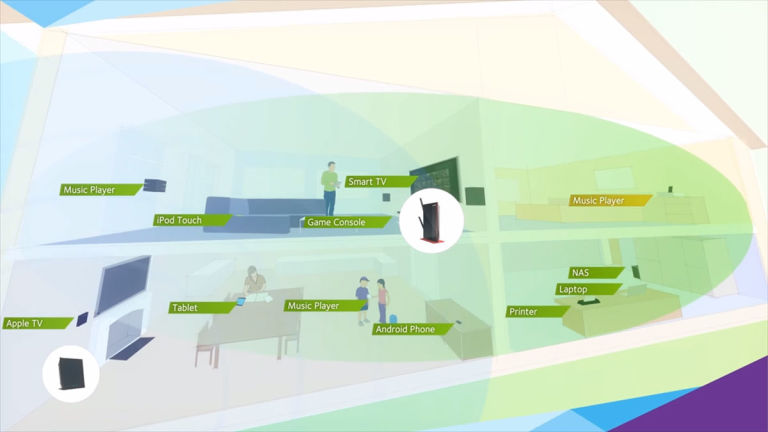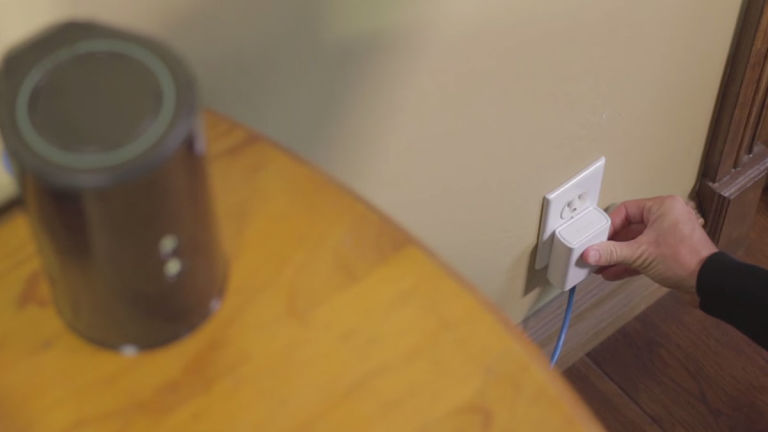Sadly, we're not yet
living in an age of ubiquitous high-speed Wi-Fi access—there are still
internet black spots hiding in distant basement corners and the edges of
the yard where it can be difficult to get on Facebook let alone
Netflix.
Take
heart though, because solutions are available. If there's a problem with
weak Wi-Fi somewhere on your property, here are three fixes you can try
depending on your budget, DIY know-how and needs.
Wire up some ethernet
It's the opposite of Wi-Fi
but bear with me for a minute. Wired access—despite its inconvenience —
remains the best way of getting online. It's faster than Wi-Fi, it
doesn't get confused by microwaves and baby monitors, and if you can get
an Ethernet cable down to your basement or out into your backyard then
you should go for it. It's the most reliable option.
This
will probably need a little DIY expertise and indeed some
weatherproofing if you're heading outside. You can use a PVC conduit or outdoor cable
that can survive being buried for your backyard. For the basement,
you're probably going to have to drill a hole or two and use wall clips
to keep the cable neat and tidy.
With
your cable ready and the path cleared, you run one end from your
internet router and plug the other end into your laptop (or smart box or
whatever). If your laptop or desktop doesn't have an Ethernet port,
adapters are usually available.
But
if you need Wi-fi—either for freedom, or for a mobile device—turn the
other end of the cable into a Wi-Fi hotspot: All you need for this is a
standard router (it's a good use for a router you no longer use)
configured as a wireless access point or some kind of standalone access point device.
Taking
the cabled route may seem like more time and effort than it's worth,
but it's not expensive in cash terms and you get a much better quality
internet connection out of it. Plus, there's less chance of your
neighbors being able to hop on your network.
Still,
it depends on your needs. If you want to hook up a smart TV with an
Ethernet port down in the basement, it's perfect; if you want to browse
the web on your smartphone at the end of the garden, you'll need to set
up the hotspot.
Get a Wi-Fi repeater
Repeaters
(or boosters) are the most popular way of stretching out a Wi-Fi
network at home. As the name suggests, they take your internet access
and pass it on to a wider area, like connecting ripples in a pond. The
problem is, those ripples get weaker the further they go.
Still, they've very convenient, and many of them take just seconds to set up. Some simply plug into a wall outlet while others are as big as your main router, but you shouldn't need any IT degrees to understand how to set one up. Just read the instructions.
As
we've mentioned, signal strength can be an issue, particularly if the
repeater is a long way from the original router. Bear in mind that you
might not be able to stream HD videos depending on the depth of your
basement or the length of your backyard. Most repeaters can duplicate
the original signals, so you don't have the issue of switching from one
network to another as you move.
Most
of the major manufacturers have repeater kit available: TP-Link,
Netgear, D-Link and the rest, and it's worth going for a well-known
brand name to make sure you get the reliability and support you're going
to need.
Because
the position of your router can make such a difference, consider moving
your router to a more central location in your home before trying to
repeat its signal. If the router supports it, there's also the option of
upgrading its antenna to boost the source signal. In fact, an antenna upgrade alone may be enough to remove any dead spots you have on your property.
You
may also see boxes labelled as extenders, which do a repeater's job but
usually create a new network name at the same time. Manufacturers and
retailers don't always use the correct terms, so make sure you know what
you're getting when making a purchase.
Get a powerline kit
Installing
powerline kit in your house is essentially a cross between the two
solutions we've already mentioned. It extends your original network but
uses an existing wired network, namely the electrical wiring in your
home.
In theory,
you run a cable from your router to one outlet, and plug in another
adapter somewhere else in your house to take a wired or wireless
connection there too. Obviously this will work best for the basement
scenario, but it can also be useful for the backyard if there's a socket
near the door or window.
A wide range of kits are available,
so at the business end of the powerline network you can set up a wired
connection or wireless access point as required. The only downsides are
it's relatively expensive and its effectiveness depends on the wiring in
your home. It may not perform satisfactorily in homes with older
setups.
Bear in
mind that power strips and surge protectors usually interfere with
powerline hardware, and you will of course be taking up an
outlet, unless you buy one of the adapters with AC pass-through.
If
you're able to find devices that work in your home (hang on to the
receipt just in case) then powerline networking can be a straightforward
and reliable solution to extending Wi-Fi into dead zones. If there's an
outlet in your backyard or garden shed then so much the better.
Again,
try and go with a well-known brand when out shopping, though it doesn't
necessarily have to match your router. Setting the system up usually
only takes a few moments and you typically have to download and install
some software on a computer to get everything working correctly.
By using one of these methods—or maybe by combining more than one—you should be able to get decent Wi-Fi wherever you need it.



No comments:
Post a Comment